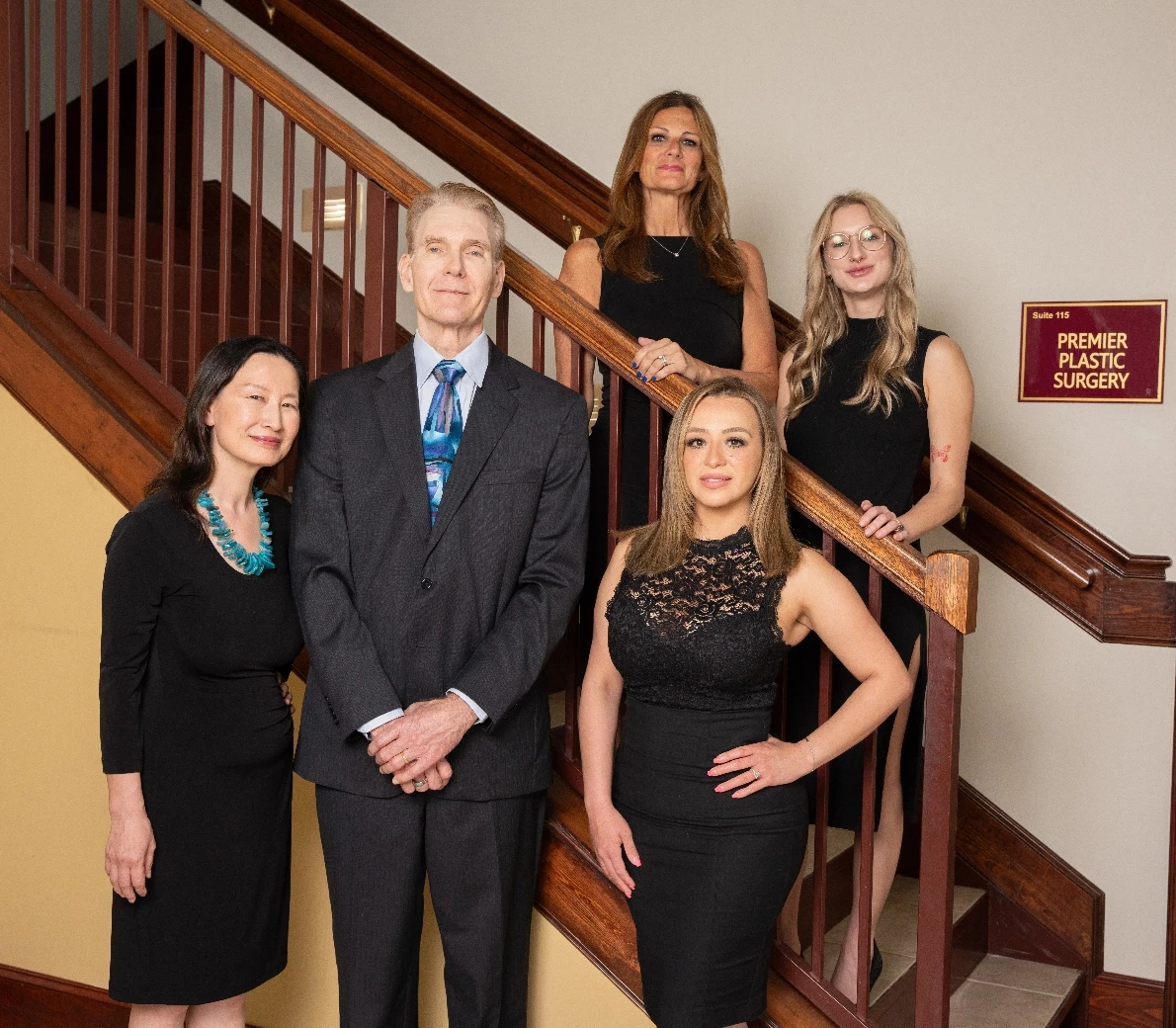Mini-Facelift
Also called a Limited-Incision Facelift or “weekend” facelift, this cosmetic surgery is a variation of the full facelift but is a less invasive alternative that can address mild-to-moderate signs of aging. Patients who get a mini-facelift are typically younger and have tighter skin, requiring less skin removal.
Your mini-facelift incisions will be discreet and hidden in the natural creases of your skin, usually have a faster recovery time than a traditional facelift, and can be done using local anesthesia.
Deep Plane Facelift
This procedure involves releasing the four ligaments that connect the deep plane layer of your facial anatomy. This enables tension-free movement and avoids creating tightness traditionally associated with the visuals of a facelift. The procedure’s name comes from the anatomic plane between the superficial muscle and fascia of your face and the deeper layer of muscles that allow you to smile and make other facial expressions.
Deep plane facelifts might be an ideal choice for those looking for even more dramatic results than a typical mini-facelift. This procedure utilizes shorter incisions than a full facelift, which requires less tissue removal to eliminate sagging while still providing visible improvements without altering other features too drastically, which can lead to unwanted changes in one’s appearance over time.
Subcutaneous Facelift
A subcutaneous facelift is performed either under general anesthesia or with twilight sedation (also called local anesthesia). The first step is a careful
neck lift incision that is carried down from either behind the sideburn area to in front of the tragus (or vice versa) and, afterward, carried around the ear to the posterior hairline.
Next, a skin flap is elevated from the face and neck, pulled in an intermediate vector, and tightened as appropriate to reduce skin laxity. (Note: the skin flap is not raised to the level of the SMAS in an SQ facelift.)
Any excess skin is trimmed, and the skin edges are carefully approximated with a fine nylon suture. A soft dressing and a drainage tube are often applied, and the patient is discharged following a 23-hour period of observation. This procedure is rarely performed in our practice, as the durability of the lift is limited by the elasticity of the skin, which tends to stretch over time. As a result, the effects of facelift surgeries can be short-lived and result in a “wind-swept” appearance, especially after the skin tension relaxes.
SMAS Plication
In this technique, the skin flaps are elevated in a manner analogous to the procedure described above, with the exception of the Minimal Access Cranial Suspension (MACS) lift, in which there is no incision in the hairline behind the ear.
Because the SMAS retaining ligaments are not released, there is limited movement of the SMAS layer, which limits the results that can be obtained.
The Lifestyle Lift™
As you are probably aware, this branded facelift procedure was heavily advertised with little downtime and one that can be performed within an hour. Important considerations involve a few assumptions to meet this promised hour-long procedure.
Assuming that the hour stated as the operative time is exclusive of the establishment of anesthesia, prepping, draping, marking, and injections, any dissection performed on both sides of the face within that time frame would be limited in scope, as the time for suturing would be deducted from the total operative time.
In summary, the term was a marketing term as opposed to referring to a specific surgical procedure.
SMASectomy
In this procedure, skin flaps are elevated, as discussed above. A section of the SMAS in front of the ear and overlying the parotid gland is removed; the far cut edge of the SMAS is advanced to the cut edge adjacent to the front of the ear, and the incision is closed.
Similar to the SMAS Plication, the results are limited by the fact that the SMAS retaining ligaments are not released. Furthermore, the SMAS is not anchored to a fixed point, making it hard for your skin to heal properly into the desired fundamental appearance.
High-Lamellar SMAS Lift
This technique, originally described by Dr. Bruce Connell MD, is an extensive dissection that mobilizes the SMAS by dividing the SMAS retaining ligaments, dividing the SMAS at a level superior to the zygoma, and fixation to the deep temporal fascia. Dr. Hankins believes that this method is the only method that can offer superior longevity of the results to this technique.
What are the downsides to this procedure compared to the other facelift techniques mentioned above? The area of transection of the SMAS crosses the path of the temporal branch of the facial nerve. This is the nerve that motors the frontalis muscle or the muscle that elevates the brow. However, at the point that the nerve crosses the zygoma, the nerve is closely approximated to the bone and is covered by a thin sheet of fatty tissue.


